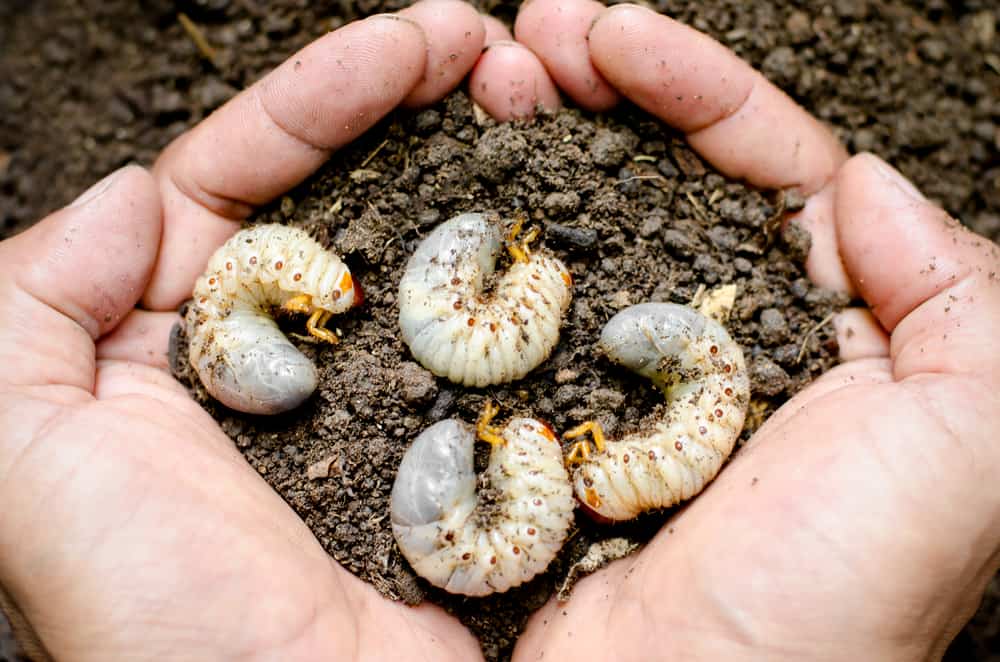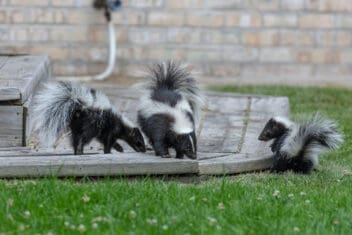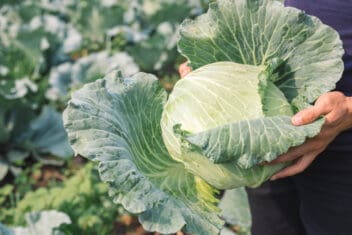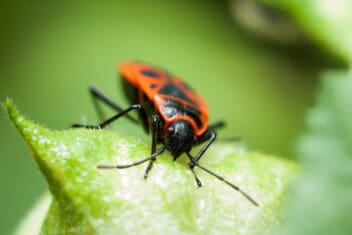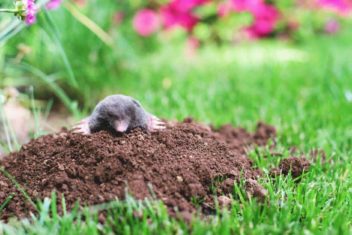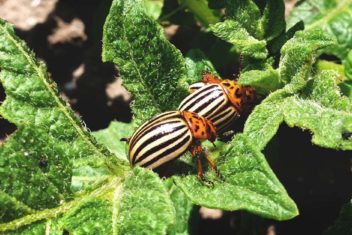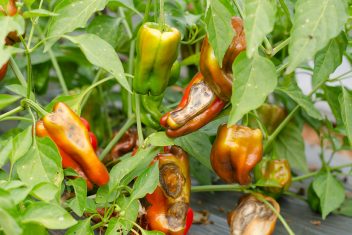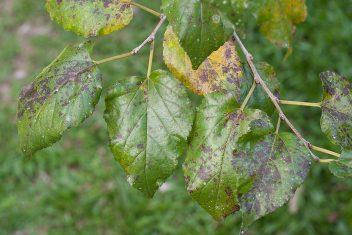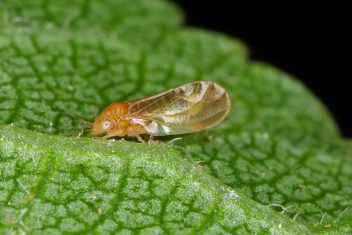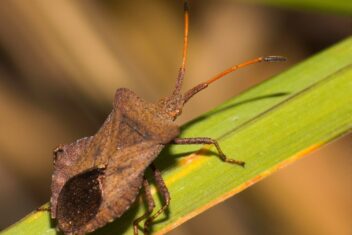Once the larvae begin to feed on the roots of plants, they limit the nutrients and restrict moisture. The first symptoms resemble other problems like root rot or drought, so examining the rest of the plant before diagnosing white grubs is important.
Here is how to identify and prevent white grubs from feeding on your plants.
Get to Know White Grubs
White grubs are the larval stage beetles in the Scarabaeidae family. These larvae are usually found feeding on the roots of turfgrass and hiding among tall grass. It’s also common to find them on the roots of corn, potatoes, carrots, and some ornamentals.
White grubs were initially classified as members of the genus Phyllophaga, but have been reclassified into various other species in the Scarabaeidae family. You’ll see white grubs that belong to the Cyclocephala, Popilla, and Ataenius genera, for instance.
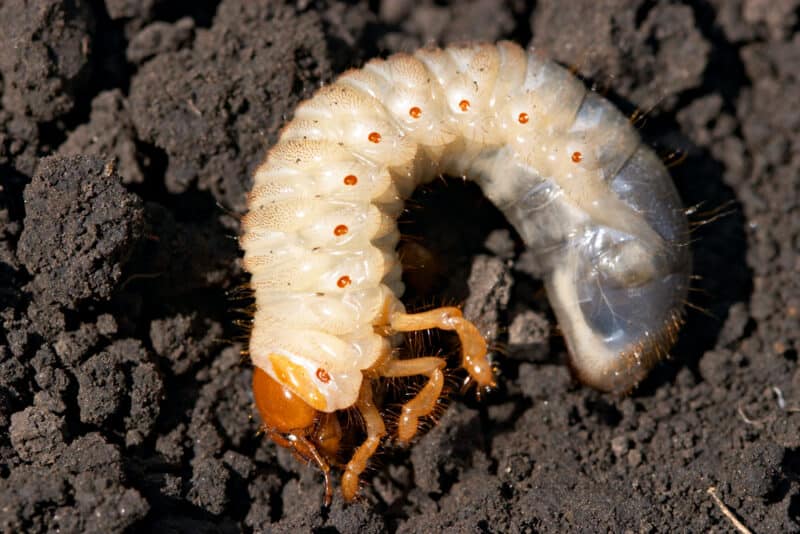
Regardless of the classification, all white grubs generally look similar. They are usually cream and C-shaped when disturbed. They have reddish-brown heads and three pairs of short legs near their head. When fully mature, the larvae grow until one inch long.
This distinct appearance is hard to miss once you see these larvae up close.
Some larvae are exotic (non-native), and some have developed resistance to pesticides. Some only appear in the evening or during the day, so finding the right control solution is even more difficult.
Stages of Growth
Depending on the species, the larvae can have varying life cycles. For example, some go through multiple generations per year, and others only live two years in total. This adds to the challenge of finding the ideal treatment for these pests.
Even though the larvae might have different life cycles, they go through the same growth stages. First, the beetles lay eggs, then larvae mature and pupate before becoming mature adult beetles.
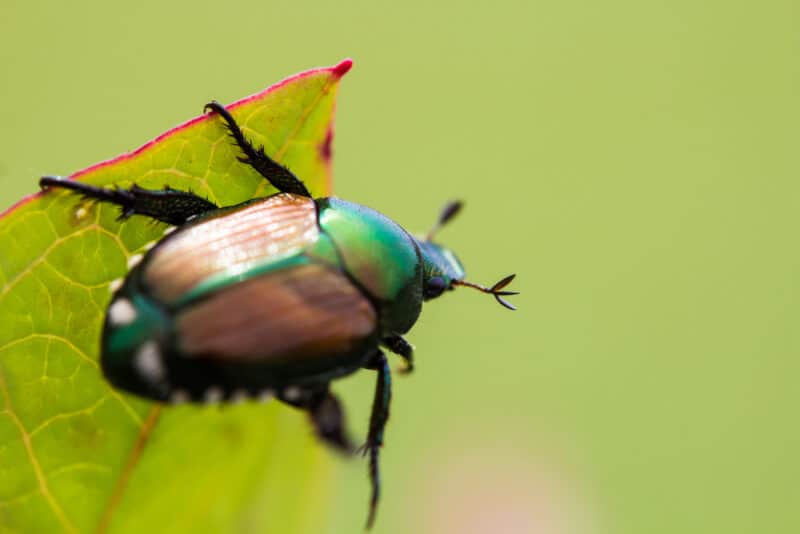
For instance, let’s look at Japanese beetles (Popillia japonica). Adult Japanese female beetles lay their eggs few inches in the soil during the spring.
Within two weeks, the eggs hatch, and the white grubs look for nutrients in the plants nearby. During colder months, the grubs dig down and hibernate beneath the soil, where it’s warm and protected.
Then, they begin feeding on the plant’s roots in spring before becoming pupae for a few weeks. Finally, they transition to their mature adult form.
Monitoring the larvae is crucial to determining the proper treatment and getting rid of these pests.
So, how can you tell you have white grubs?
Identifying White Grubs
As these larvae are great at hiding, you must take time to observe your garden and dig around the ground if you suspect grubs. Checking the soil is the easiest way to confirm you have white grubs.
Check the soil for a soft texture and look out for wilting. These are two main signs of white grubs, so you’ll need to do some digging. The roots are the next place to check to see if there is damage to the plant.
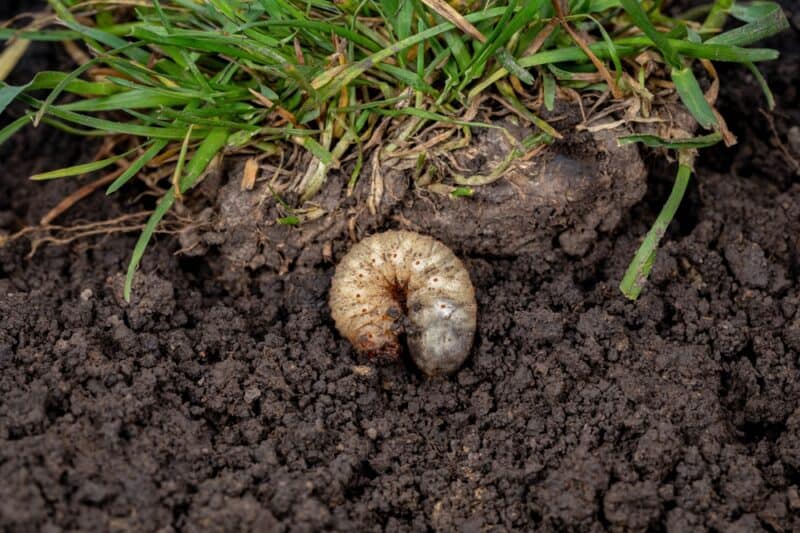
If you suspect white grubs in your backyard, remove the top layer of soil and search for cream, C-shaped larvae.
To save time, prioritize the areas where the pests live. Generally, the adults feed on the leaves of trees like willows or ash. Grubs feed on and hide in potatoes, corn, turfgrass, grasses, and ornamentals.
Symptoms of White Grubs
Sometimes it’s not the presence of grubs that will tip you off to an infestation, but symptoms in your favorite plants.
A lack of root hairs is a sure sign of this pest, for instance, since that is what they feed on. No root hairs cause stagnant growth and can lead to nutrient deficiency. When the white grubs continue feeding large groups, they eventually destroy your plants.
Another tip is to watch the feeding activity of the birds. Do you spot a group of birds eating around one area of your homestead? That might be a sign that they have found a big juicy patch of white grubs.
Wilting of implants is another common symptom. Remember, other causes of wilting can be temperature, lack of water, or other diseases. To ensure that your plants get a suitable care, double-check the growing requirements for each plant.
Then, it’s time to go and investigate for white grubs by digging around in the soil.
If you have large patches of brown grass in your lawn, it’s probably worth pulling up some of the sod to look for white grubs underneath. They are a very common cause of browning lawns.
Beyond birds, other animals, like skunks, also enjoy eating these little pests. Sometimes, wildlife can alert us to problems before we see them ourselves!
Treatments for White Grubs
Generally, treating white grubs takes a multi-pronged approach.
As we mentioned, birds love to feed on white grubs. Encouraging birds to hang out and consume the larvae is one method for controlling this infestation. Hang feeders and place water sources to invite birds to your garden.
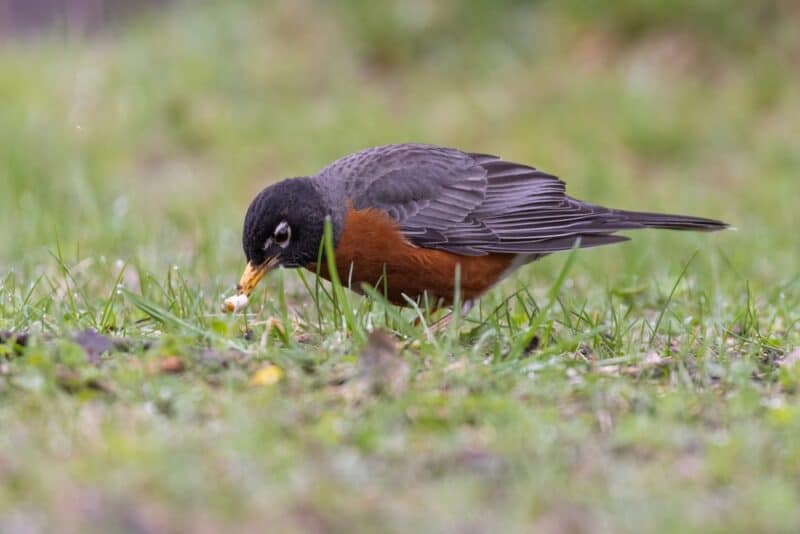
Some wasps and flies are also possible predators for white grubs. So, giving nature the time to find and remove these pests is a treatment option. The downside to natural predators is that you have no control over the process except to create a healthy environment in your garden.
Neonicotinoids, a neurotoxin that affects insects, used to be the go-to for removing white grubs. We now generally try to avoid neonicotinoids because we know that they harm native bees and other beneficial insects, upsetting the natural environment in your garden.
Because you’ll never entirely eliminate white grubs in your garden, the best approach is an organic one.
Organic Pesticides
Instead of applying chemical solutions to your soil, organic pesticides can be effective. For edible crops like potatoes or corn, stick to methods that won’t cover your crops in chemicals.
Beneficial nematodes are effective for treating white grubs as a preventative measure or when larvae are present.
Milky spore disease helps attack larvae from Japanese and other beetles but needs warm weather to work efficiently.
Products containing Bacillus thuringiensis are also effective, especially when combined with other treatments.
Remember, timing is crucial. It doesn’t help to treat for grubs when it’s the wrong time in their life cycle and the white grubs are actually pupating or are already adults.
Maintain Your Lawn
Prevention is key for a healthy lawn. Avoid cutting the grass too short in summer. Beetles love to leave their eggs in short grass, so mowing the lawn regularly attracts these pests instead of discouraging them.
Cultivate a healthy living environment for your plants by removing weeds to discourage insects from visiting. Clear away debris and other dirt so there are fewer places for beetles to hide.
Watering thoroughly but infrequently ensures the root system develops deep and strong to fight off larvae infestations. Shallow and over-watering create the perfect climate for larvae to grow, so avoid going too hard with watering over the summer.
Check the top inch of the soil every few days to see if it needs watering. This way, you’ll avoid a build-up of excess water and more larvae growing.
Simply pick off beetles if they land on your plants and keep them away from crops. Drown the beetles in soapy water to prevent them from returning to your lawn.
Sampling to Find White Grubs
If you’re planting a new crop or you want to monitor grub activity, you can take soil samples. Sampling should be done in the early stages of white grub growth. In most areas, samples should be taken by August, but sample regularly before that, starting in spring.
You can simply dig up a patch of soil and look for grubs or purchase a sample kit.
Follow the sampling steps laid out by the manufacturer and watch out for these common symptoms to know if grubs are present:
- Wilting
- Root damage
- Discolored grass
Of course, if you see grubs or beetles, there’s no need to sample. You know they’re present. When you know what to look for, picking the correct treatment method is easier. But try several treatments if you don’t have success the first time.
